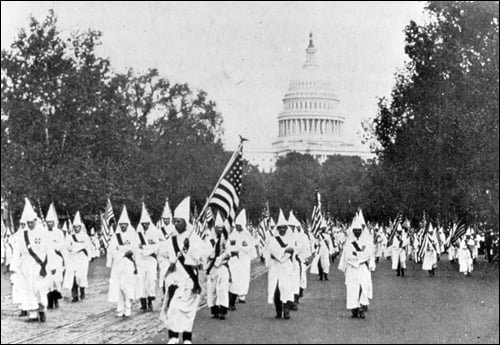
The history of the KKK in America is not an easy story to read, but it is a story worth knowing. The Ku Klux Klan is America's oldest racist terrorist group. It is hard to imagine that the world's leading power was witnessing the heinous crimes of this organization just 100 years ago. While the Ku Klux Klan has marked an important page in the history of the United States, its legacy of terror remains largely ignored in French school curricula, depriving the general public of a full understanding of this dark page of the 20th century.

The Birth of the Klan
The KKK is a secret organization created in 1865 in the city of Pulaski (Tennessee), following the Civil War. Southern veterans of the war, not admitting their defeat but especially the abolition of slavery, created this organization in order to fight for their convictions. The Klan was therefore a racist, anti-Semitic and anti-Catholic group, seeing the members of these communities as the cause of all the problems in America.
During the first era of the Klan, the actions were very brutal, even barbaric (a height of irony for an organization claiming to fight against barbarism). The goal of the group was to create a climate of terror in cities where the targeted communities were present in large numbers, thus making the KKK a terrorist group. It was inconceivable for the Klan to imagine black men expressing their political demands by voting. Thus, in 1868, during the presidential elections, the actions of the group became extremely violent. In the space of 4 weeks, the group killed nearly 1,000 African-Americans who had the misfortune to show up at a polling station. However, the acts of the Klan reached the ears of Washington, particularly Congress. Several laws aimed at stopping the Klan were passed, as well as the application of martial law in the country. This led to the deployment of the federal army to the South, with the aim of protecting African Americans by suppressing the Klan. These measures proved effective, as in 1872 the Klan was officially destroyed.
The Invisible Empire
However, the group rose from its ashes in 1914 and began a long rise in the 1920s. This period is also seen as the golden age of the Klan. This revival was made possible by the release of a 1915 film, called "Birth of a Nation" by DW Griffith. The Klan and its actions, which had fallen into oblivion, are represented as vigilantes and not criminals. The last scene of the film highlights the heroism of the Klan members, ready to die to protect white women from "black barbarians". William Joseph Simons, an American preacher, took advantage of this media frenzy to recreate the Klan, which he himself defined as an invisible empire. "Birth of a Nation" then became the showcase of the KKK, and Simons proclaimed himself emperor of the Klan. The new emperor claimed that America's enemies were no longer just blacks, but also Catholics from Europe and Jews from Eastern Europe. The Klan would also use the political and economic problems that the United States was facing after World War I to convey its messages of hate. These problems, according to the Klan, were explained by the presence of Jews in banks, jobs intended for whites being filled by blacks, or the presence of German immigrants, who had also become a target of the group. Thus, the group, blinded by hatred, saw only one option to restore America: the use of violence.

The Klan's actions reached an unprecedented level of violence during this golden age. Klansmen did not hesitate to publicly hang African-Americans or drag them through the streets in cars. The group also made these lynchings into postcard images. Their good reputation was such that Klansmen were applauded as heroes by the public. This enthusiasm for their actions led to an increase in violence with arson, public lynchings, and even bombings. A notorious example is the bombing of the 16th Street Baptist Church in Birmingham, Alabama, in 1963, which killed four young African-American girls. Another notable example is that of Tulsa in 1921. On May 21, 1921, a mob set fire to hundreds of black-owned businesses and homes in Greenwood for two days. More than 300 blacks were killed, more than 10,000 were left homeless, and 40 city blocks were lost to the flames. Survivors said the bodies of the victims were loaded onto trains and thrown off bridges into the Arkansas River or, more often, into mass graves. A method that strongly recalls the way the Nazis would treat the Jewish people 20 years later.
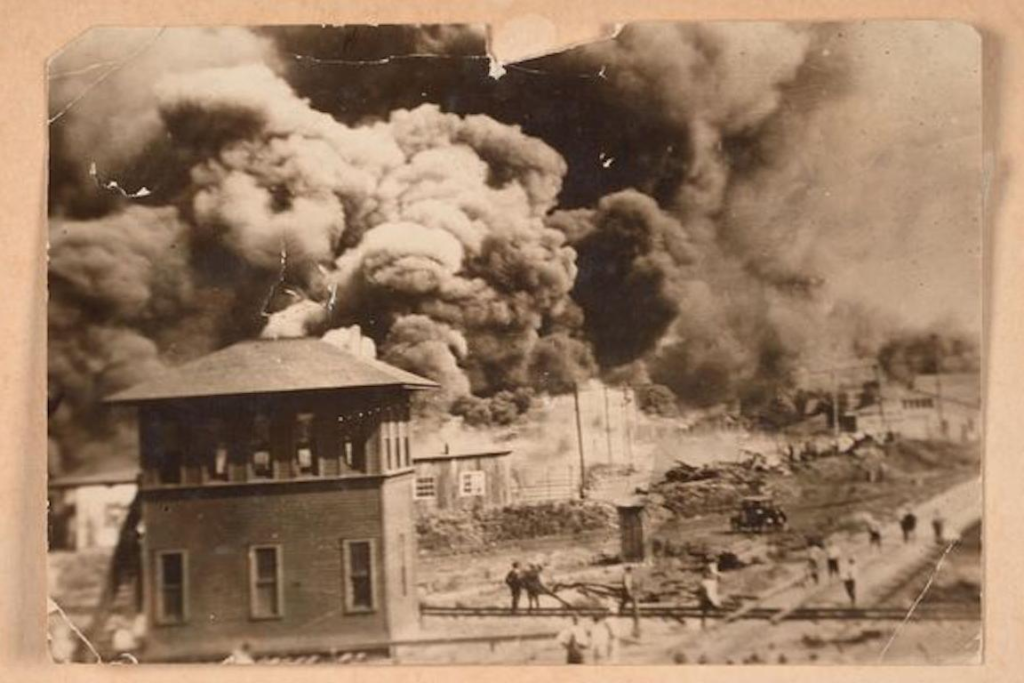
The organization had over 4 million members in its ranks. It also became one of the largest political organizations in the country and invaded the entire territory. A symbol of this growth took place on August 8, 1925, when 40,000 Klan members marched in Washington. The Klan also managed to infiltrate political institutions by placing members there and benefiting from the support of certain politicians. It has been proven that 11 governors, 16 senators and 75 members of Congress were members of the Klan. Worse still, Hugo Black, a member of the Supreme Court, was also a member. President Truman would later admit in his memoirs to having briefly joined the Klan in his youth. With such a large number of members present in American political institutions, the Klan was able to influence the passage of certain laws in its favor. The Klan's greatest political victory was its influence in the passage of the Immigration Act of 1924, which established for the first time an annual quota of immigrants.
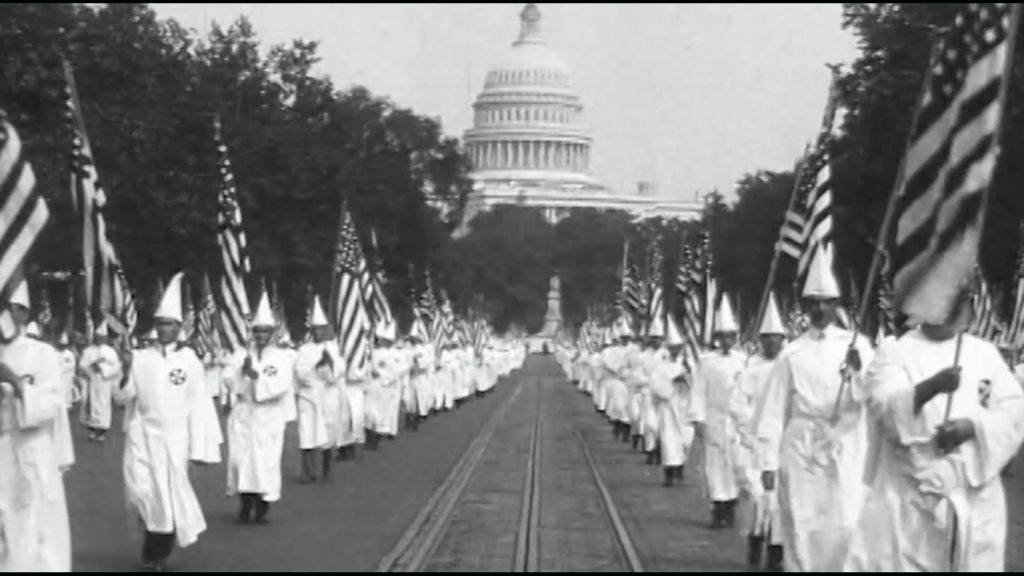
It was also during this period that the group began using their infamous costumes consisting of a long white robe or tunic, covering the body down to the feet and featuring the Klan symbol sewn on the chest, topped with a pointed hood. The purpose of the costume was to impersonate ghosts in order to terrorize their victims, who they knew to be superstitious.
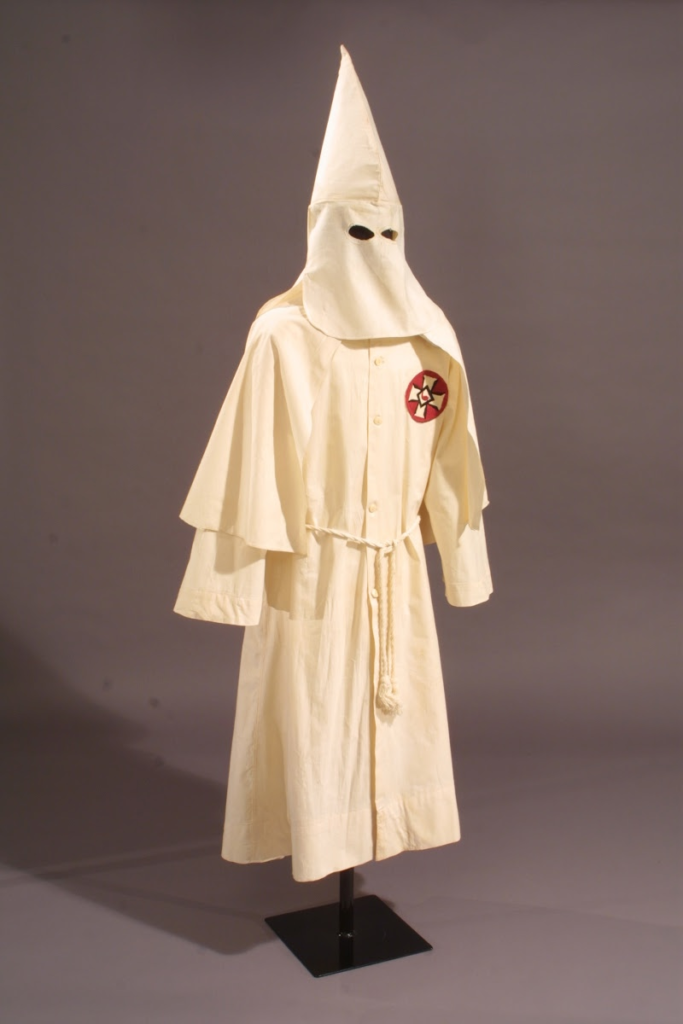
However, the golden age of the Klan did not survive the end of the 1930s. DC Stephenson, one of the emblematic members of the group, found himself at the heart of a terrible scandal. It would be revealed that he regularly beat his two ex-wives, but above all that he had raped and killed his assistant. The latter would be sentenced to life in prison. The image of the Klan would suffer greatly following this conviction. The KKK would disown Stephenson for his crimes, which were not in line with its virtues, in particular that of protecting white women. Stephenson would later reveal in prison the names of the politicians corrupted by the Klan. Following this affair, and in the space of only 3 years, the group would lose 90 % of its members, the latter no longer wanting to be associated with it. The work of certain journalists also weakened the image of the Klan. Carter and Cole's articles, aimed at denouncing Klan members, led to the arrest of Klan members by the FBI and earned them a Pulitzer Prize. There was also the work of Walter White, who came from a black family but was white, who was able to infiltrate the organization in order to obtain information. We cannot ignore the work of Ida B. Wells, a black journalist who would have catalogued and published all the lynchings carried out by the Klan.

The scandals that the Klan would face, as well as its links with the Nazis during World War II, would get the better of it. The Klan would officially disappear again in September 1945, following a judicial liquidation, the group having paid no taxes in the 1920s.
A return to the shadows
At the end of World War II, African Americans who had fought for their country returned home with a deep sense of accomplishment and pride. They had given their time, energy, and often their lives to defend American values, and thus believed they deserved the same respect and rights as their white fellow citizens. This new vision of America was clearly not in line with the ideology of the Klan. This created tensions with whites in the American South, who were not ready to accept this thirst for freedom.
In October 1946, Samuel Green, a doctor and Klan member since the 1920s, took over the organization. The Klan had managed to maintain an underground structure despite bankruptcy. Thousands of people were once again willing to join the group.
The Klan, however, would not manage to become as influential as in the 1920s. This time, their representations in the media and films would not be beneficial to them. The Klan was thus represented as a threat to be fought, particularly in comics promoting superheroes such as Superman or Captain America. It was Stetson Kennedy, a journalist who had infiltrated the Klan shortly after the war in order to learn more about their revival, who would contact the producers of Superman so that they would warn children about the toxicity of the Klan.
Kennedy's campaign would bear fruit when, in 1946, the government officially classified the Ku Klux Klan as a subversive organization. At that time, the Klan had about 20,000 members. However, the threat was not completely eliminated. The group remains active today, continuing to spread its hateful ideology. Currently, it is estimated that about 15,000 people are still members of the Klan.
How can we explain the group's expansion?
The group quickly understood that American patriotism, the country's true strength, was a double-edged sword. Indeed, at the end of the Civil War, they were able to persuade Southerners that the country was in danger. They drew on the feeling of injustice and betrayal that Southerners felt after the defeat to manipulate them. Their rhetoric was that the government had betrayed them and that communities, particularly black communities, were favored to the detriment of whites. The KKK built its rhetoric on the fact that white supremacy was threatened.
The "publicity stunts" they received were used extremely well by the Klan. One cannot help but recall the spotlight given to them by the film "The Birth of a Nation", but also their presence in other films of the 1920s, including a film by the famous Walt Disney called "Alice's Spooky Adventure". The KKK also financed theaters so that performances in their honor could be performed there. Their goal was to be seen in the American common imagination as knights who came to defend the interests of the white American people.
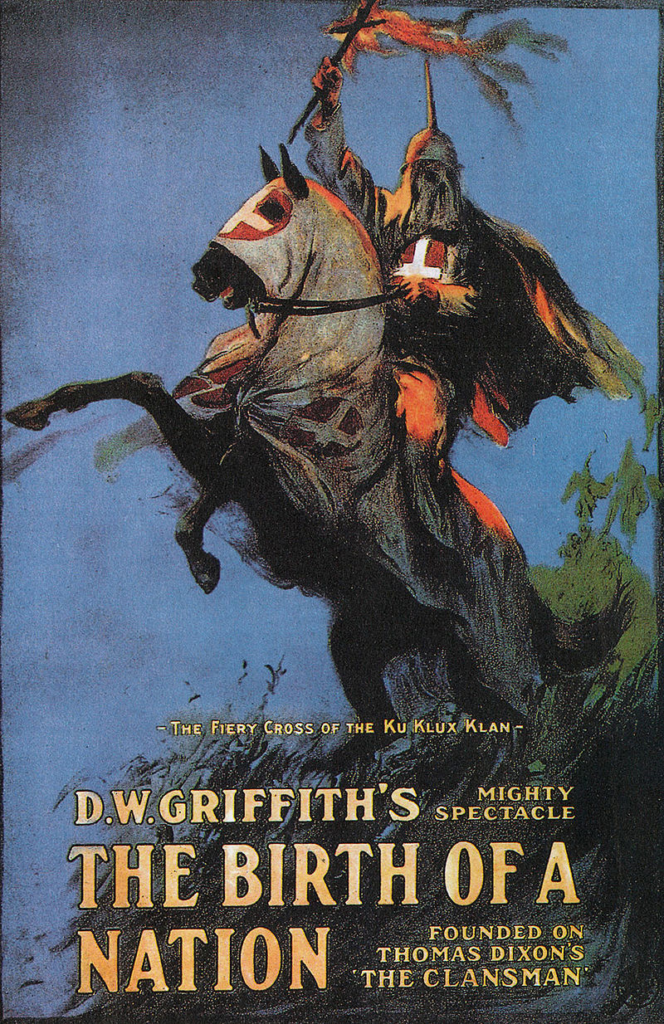
The Klan had also become a strategic tool for developing an influential network. Its members included people of high status, and many sought to join it in order to build their reputation. This was precisely why Truman had joined the Klan.
The Klan also mastered the art of propaganda to perfection. The organization had radio stations that broadcast their messages 24 hours a day, but also music glorifying them and newspapers. One of the most famous newspapers was called "The Call of the North." This newspaper specifically reported on the group's actions in the state of Minnesota. The state then had 30 chapters and more than 300,000 members. The reputation of the newspaper was such that their first publication was printed in tens of thousands of copies. It is still unknown to this day how many people subscribed to it. The newspaper reinvented itself under the name Minnesota Fiery Cross, highlighting the ideas and political proposals of the Klan. The newspaper was known for its strongly moralizing tone and presented the KKK as a force fighting for "the best things in American civilization." The newspaper would later disappear during the fall of the Klan.

It was through the use of powerful and skillfully orchestrated rhetoric that the KKK was able to extend its influence and establish its dominance throughout the country. Their ability to manipulate public perceptions and exploit social divisions allowed the group to build a powerful network and significantly increase its power. Through this strategy, they not only strengthened their presence, but also attracted influential members, thus consolidating their position and impact.
Why an article on the KKK today?
Because it is a duty to remember. We live in a world where the ideology advocated by the Klan is not taboo. Many of the KKK's thoughts are still relevant today. This feeling of injustice and this fear of seeing white supremacy die out are still present in the United States, just as they are in the world.
The strategies used by the KKK, particularly in terms of propaganda, are now being adopted by many racist groups and political movements. Far-right groups around the world, such as the KKK, present themselves as saviors of their nations in the face of immigration and blame it for all the ills of their countries, as does for example the Reconquête party of Éric Zemmour. This rhetoric is also found in American politics, and even more so in the run-up to the presidential elections. Donald Trump, for example, is adopting an approach similar to that of the KKK. During the September 9 debate against Kamala Harris, he claimed that immigrants were eating Americans' pets (a specific example that he generalized to all immigrants, a tactic comparable to that of the Klan).

It is also important to remember that the Klan, like other white supremacist groups such as the Proud Boys or Atomwaffen Division, are present today. Some former Klan members are warning black American journalists to protect their loved ones. According to them, the latter are waiting for a civil war in order to take control of the country. Many experts claim that the attackers of the Capitol on January 6, 2020, following Trump's defeat in the presidential election, included white supremacists, as well as, for some, members of the Ku Klux Klan. Donald Trump is seen by some as the one who could take the United States back to a bygone era. This vision is accompanied by the resurgence of racial tensions, as evidenced by the violence still present in the country today. A tragic example is the death of George Floyd, killed by an American police officer, which sparked a wave of protests against racism. Another notable event was the Charleston shooting, which occurred on the night of June 17-18, 2015, at the Emanuel African Methodist Episcopal Church, a black church in Charleston. Dylann Roof, a 21-year-old white supremacist extremist, opened fire, killing nine people, including Clementa Pinckney, a member of the South Carolina Senate.
The history of the Ku Klux Klan is a powerful reminder of the dangers of hatred and division. Although the Klan’s influence has waned, the ideologies it espoused still resonate in some current political discourse and movements. This should prompt us to remain vigilant in the face of these resurgences and to remember the lessons of the past. It is now up to us to decide: whether to remain prisoners of the dark views of the past or to move forward resolutely toward an enlightened and innovative future.
RELATED POSTS
View all



